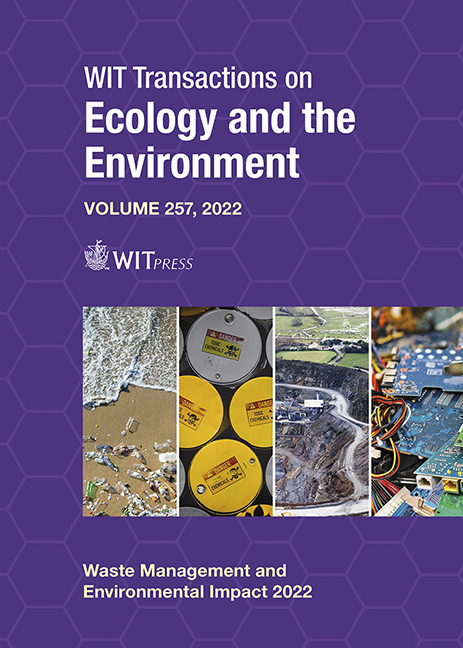ATTRIBUTION OF POLLUTION DISCHARGES IN COASTAL WATERS DURING THE COVID-19 LOCKDOWN USING REMOTE SENSING AND BIOINDICATORS
Price
Free (open access)
Transaction
Volume
257
Pages
10
Page Range
177 - 186
Published
2022
Paper DOI
10.2495/WMEI220151
Copyright
Author(s)
MASSIMILIANO LEGA, GABRIELE MEDIO, THEODORE ENDRENY, GERMANA ESPOSITO, VALERIA COSTANTINO, ROBERTA TETA
Abstract
Attribution of environmental pollution phenomena and their causes represents a real challenge due to the complexity of the scenarios to be examined and the multiple sources to be considered. Furthermore, the definition of the parameters to be monitored, considering the specific phenomenon, becomes very difficult, especially in relation to the available technological solutions and operational needs. Various elements, naturally present in the scenario under examination, can be used as perfect sensors/indicators to detect the status of the environment and effectively reveal the relationships between specific sources of pollution and target areas. This study demonstrates how pollution attribution is achieved using remote sensing of cyanobacteria, which are excellent bioindicators due to their sensitivity to multiple stressors and rapid response to habitat changes throughout the event. The study was conducted in the coastal waters of the Campania region (southern Italy) for the period before, during and after the COVID-19 lockdown. Along the coastal area examined, a special focus was dedicated to Lake Avernus. This program detected the presence of specific cyanobacteria species, some toxic, and revealed the relationship between their presence and anthropic pollution activities. This paper demonstrates how deployment of multidisciplinary analysis with choreographed use of remote/proximal sensing and in situ sampling across space and time utilized the cyanobacteria to characterize the impact of human activities. The study allowed environmental forensic teams to identify and confirm the anthropogenic origin of the environmental variations that stimulate the cyanobacterial blooming.
Keywords
environmental impact assessment, pollution, coastal waters, multispectral analysis, multilayer analysis, proximal sensing, remote sensing, hierarchical monitoring




